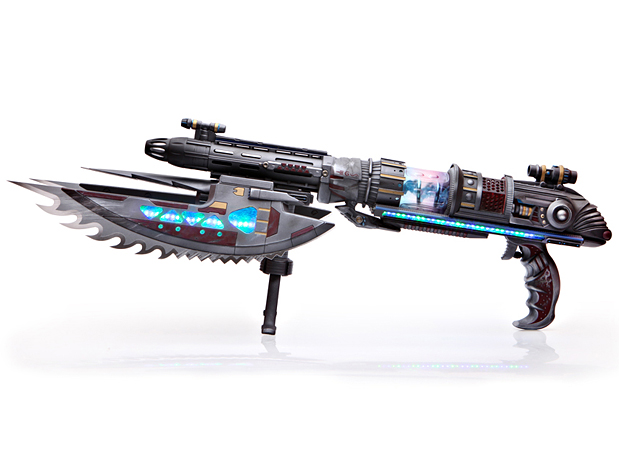If you ever wanted to create a movie quality Alien Rifle Prop now you can. In this tutorial I will instruct you in the basics of how to utilize a disposable flash camera to make the effect of a blaster.
You can utilize a toy gun for the housing of the flash unit with minor alterations, or you can go to the extreme and make a new design from scratch like I did.
Determine the overall look of your alien weapon so you envision the end product when searching for objects you can utilize in the construction of the weapon. The local thrift shops or dollar store are great places to start. I bought many types of toy guns and other plastic items I envisioned could be used in the construction of my weapon. It is amazing how many ways you can repurpose every day items for the external construction. I used just sections of toys, PVC pipe, styrene plastic sheets, and hardware to give a completely new and original look for my rifle.
Below are some of the parts I pieced together from toy guns and PVC pipe etc.
Here is an image of the pieces put together as units for assembly.





